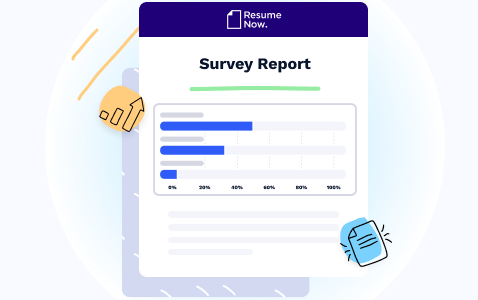A recent survey by Resume Now reveals that busy work—tasks that create the appearance of productivity but offer little meaningful impact—is a growing challenge in American workplaces. 51% of employees say their tasks frequently involve busy work, with some dedicating up to 16 hours per week to these low-value activities.
The Productivity Drain Report highlights how busy work is taking a toll on workplace efficiency and morale. Based on responses from 1,130 U.S. workers surveyed in November 2024, the report underscores the widespread frustration employees feel, with 54% reporting that they lack the power to address these inefficiencies within their organizations.
So, how much time are employees losing to busy work, and what can employers do to reduce it and improve workplace productivity?
Key Findings
- 51% say their work often or always involves busy work.
- 44% of workers have experienced multiple abandoned projects without explanation.
- 54% of employees feel they lack a voice in addressing inefficiencies.
- 37% report that busy work constitutes 25–50% of their daily workload and another 10% say more than half of their daily work is busy work.
- 29% of workers estimate they spend at least a quarter of their week on busy work.
Busy Work Dominates Workloads
For many employees, busy work is a persistent challenge that takes up valuable time without contributing to meaningful results. The data highlights how widespread this issue has become:
- 23% say their work "always" involves busy work.
- 28% feel it "often" does.
- 34% say it happens "sometimes."
- Only 3% say they "never" encounter busy work.
What this means: Busy work leaves employees feeling frustrated and unfulfilled, often leading to disengagement and burnout. Employees can minimize frustration by focusing on high-impact tasks, developing efficiency skills, and seeking clarity on expectations to reduce unnecessary work.

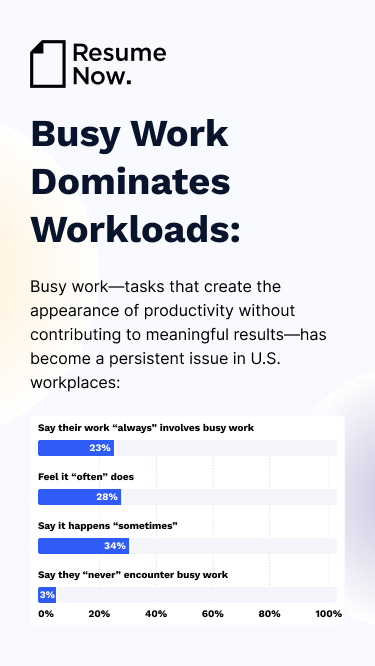
Time Lost to Busy Work
Many employees are spending a significant portion of their workweek on tasks that add little value, draining time and energy that could be better used elsewhere. The data reveals how much of their workload is consumed by busy work:
- 37% say between 25% and 50% of their tasks qualify as busy work.
- 10% report more than half of their daily workload is busy work.
- A quarter (29%) spend at least 11 hours a week on busy work—equating to more than 28% of their workweek.
- 17% spend over 16 hours weekly on these low-impact tasks.
What this means: To reclaim valuable time, employees should focus on time management strategies and clear boundaries to prioritize meaningful work and maintain work-life balance.

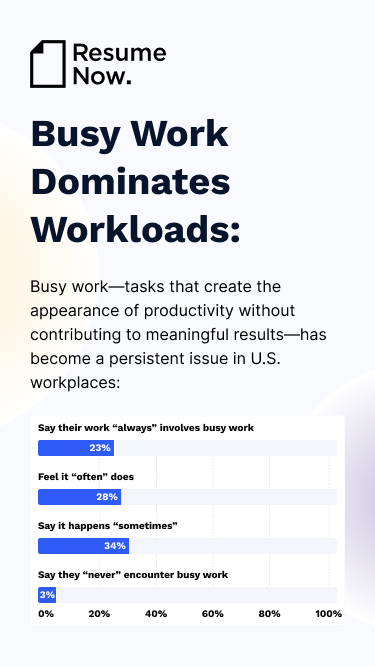
Abandoned Projects Highlight Organizational Inefficiency
Many employees find themselves dedicating time and effort to projects that ultimately go unfinished, leaving them frustrated and disengaged. Abandoned projects not only waste valuable resources but also signal deeper issues with organizational planning and prioritization. The data reveals the extent of this challenge:
- 44% of workers report experiencing multiple abandoned projects without explanation, wasting time and resources.
- These abandoned efforts waste time, resources, and employee morale.
What this means: Unfinished projects can lead to feelings of frustration and a lack of purpose among employees. Employees can mitigate frustration by proactively seeking clarity on project goals, adapting to shifting priorities, and communicating concerns early to improve project outcomes.
Employees Feel Disempowered to Drive Change
Many employees feel trapped in inefficiency, with their ideas for improvement often overlooked. Despite recognizing areas for change, they struggle to make an impact, leading to frustration and disengagement. The data shows how widespread this issue is:
- 54% say they don't have a voice in addressing inefficiencies.
- 45% feel their suggestions are considered but rarely acted upon.
- Only 46% of respondents believe their employers actively support improvements to processes and efficiency.
What this means: Employees can boost their influence by presenting well-researched solutions, leveraging team support, and using available communication channels to drive change.
Looking for a change of scenery? Our Resume Builder can help you land a new role by creating or updating your resume to meet the standards of the competitive job market.
Methodology
The findings presented were obtained by surveying 1,130 American workers on November 27, 2024 about how they feel busy work impacts their productivity. They answered different types of questions, including yes/no, open-ended, scale-based questions where respondents indicated their level of agreement with statements, and multiple-choice where they could select from a list of provided options.
For press inquiries, contact Joseph Santaella at joseph.santaella@bold.com.
About Resume Now
Resume Now is a powerful resource dedicated to helping job-seekers achieve their potential. Resume-Now's AI resume builder is a cutting-edge tool that makes creating a resume fast, easy, and painless. Resume Now has been dedicated to serving job seekers since 2005. Alongside its powerful AI resume builder and stylish, ready-to-use templates, it also features free advice for job seekers at every career stage, guides for every step of the hiring process, and free resources for writing cover letters. Resume-Now is committed to supporting job seekers and workers alike and has conducted numerous surveys related to the experience, trends, and culture of the workplace. These surveys have been featured in Business Insider, CNBC, Fast Company, Yahoo!, Forbes, and more. Keep up with Resume-Now on LinkedIn, Facebook, X, and Pinterest.
Keith is a Certified Professional Resume Writer (CPRW) and trusted media source in the career industry with over a decade of experience helping job seekers stand out.
More resources

Hard Skills: 70+ Examples to Put on Your Resume
Hard skills are more important than ever in competitive indust...

AI Trends Heading Into 2026: Resume Now’s Year in Review
In 2025 artificial intelligence moved from buzzword to workpl...

Only 1 in 10 Resumes Include Measurable Results, New Analysis of 18.4M U.S. Resumes Finds
Resume Now takes a closer look at measurable results on resume...
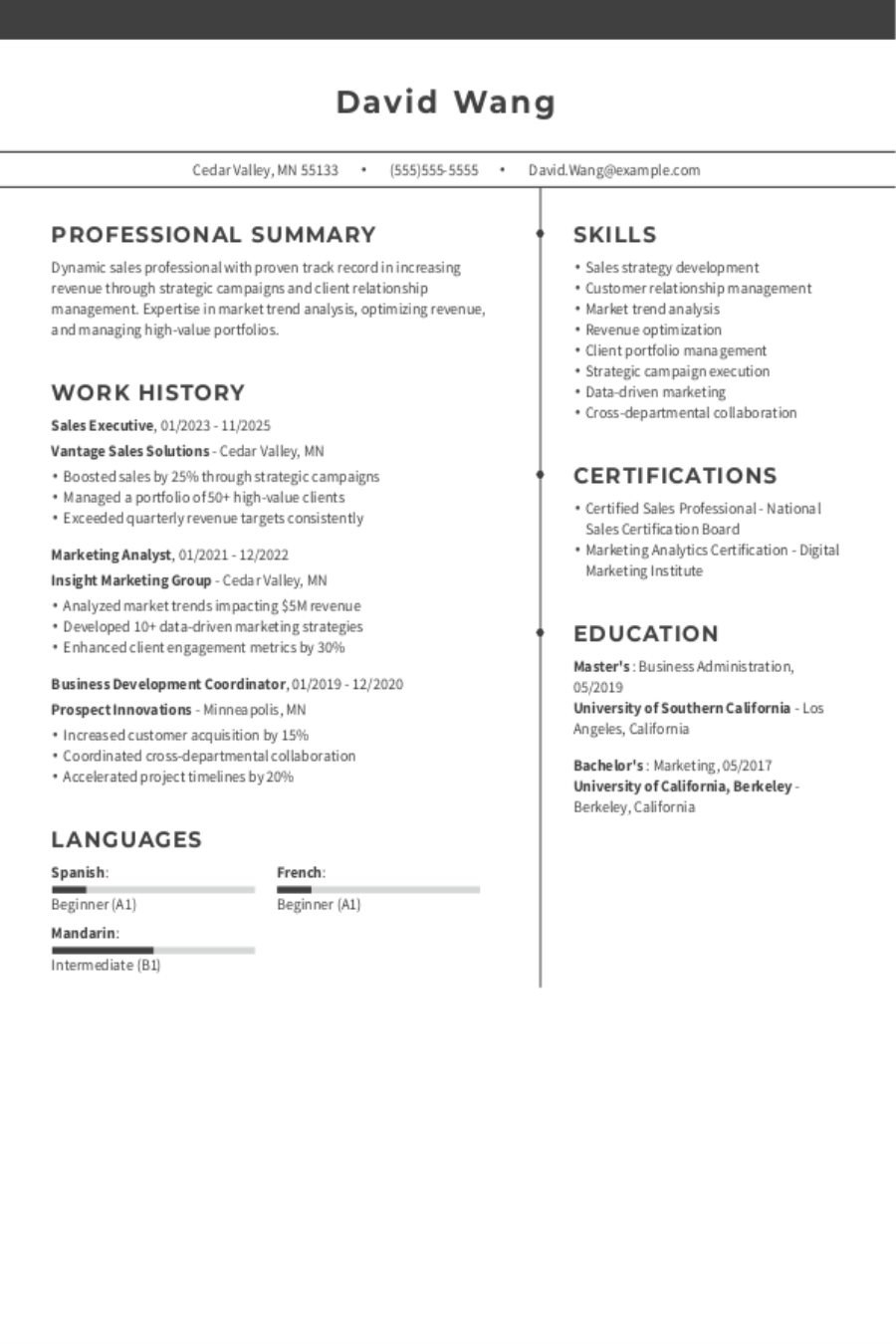
Sales Resume: Examples, Templates & Tips
Planning to pursue a sales career? Let our samples templates ...
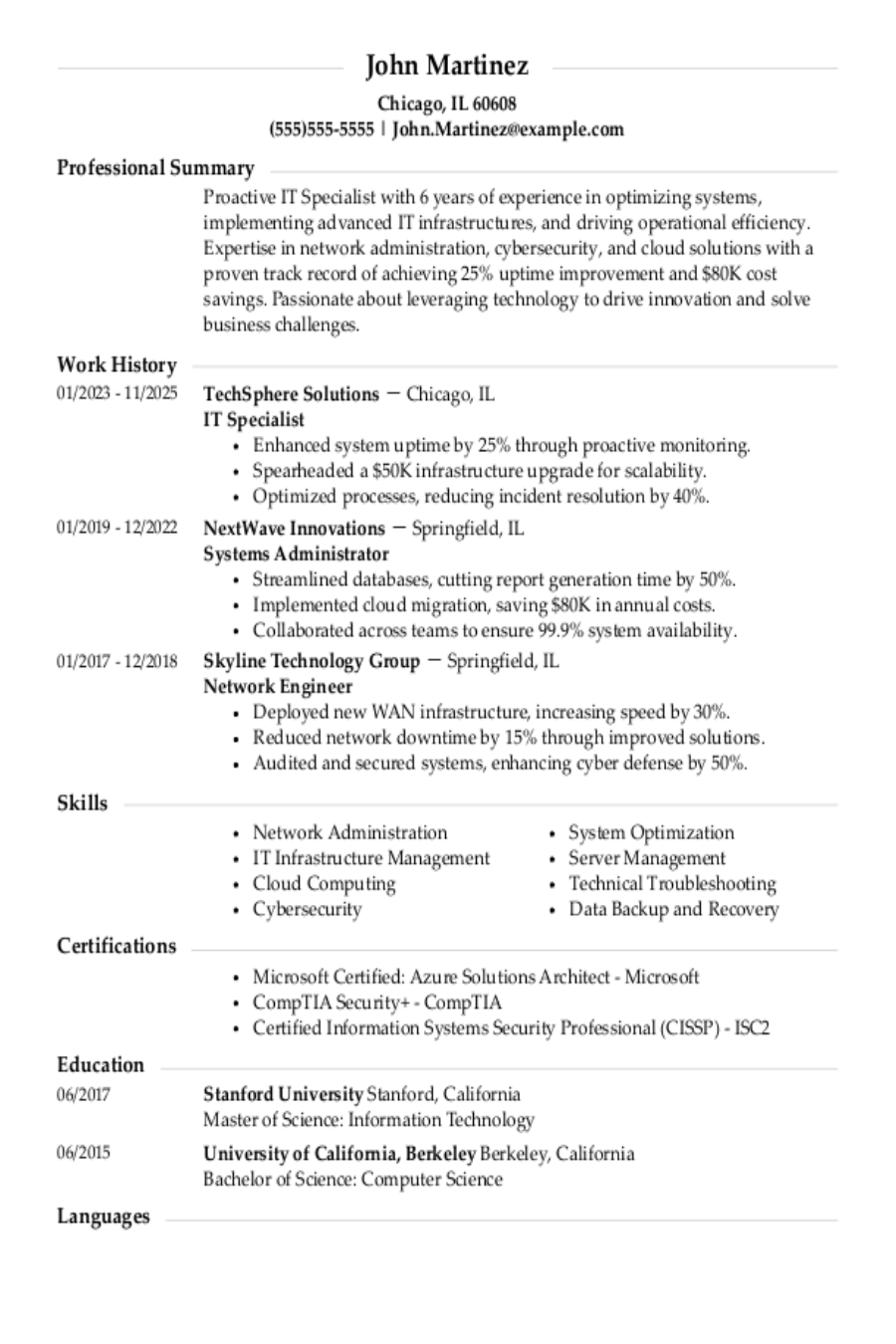
IT Resume: Examples, Templates & Tips
Our resume examples templates and writing tips will help you ...
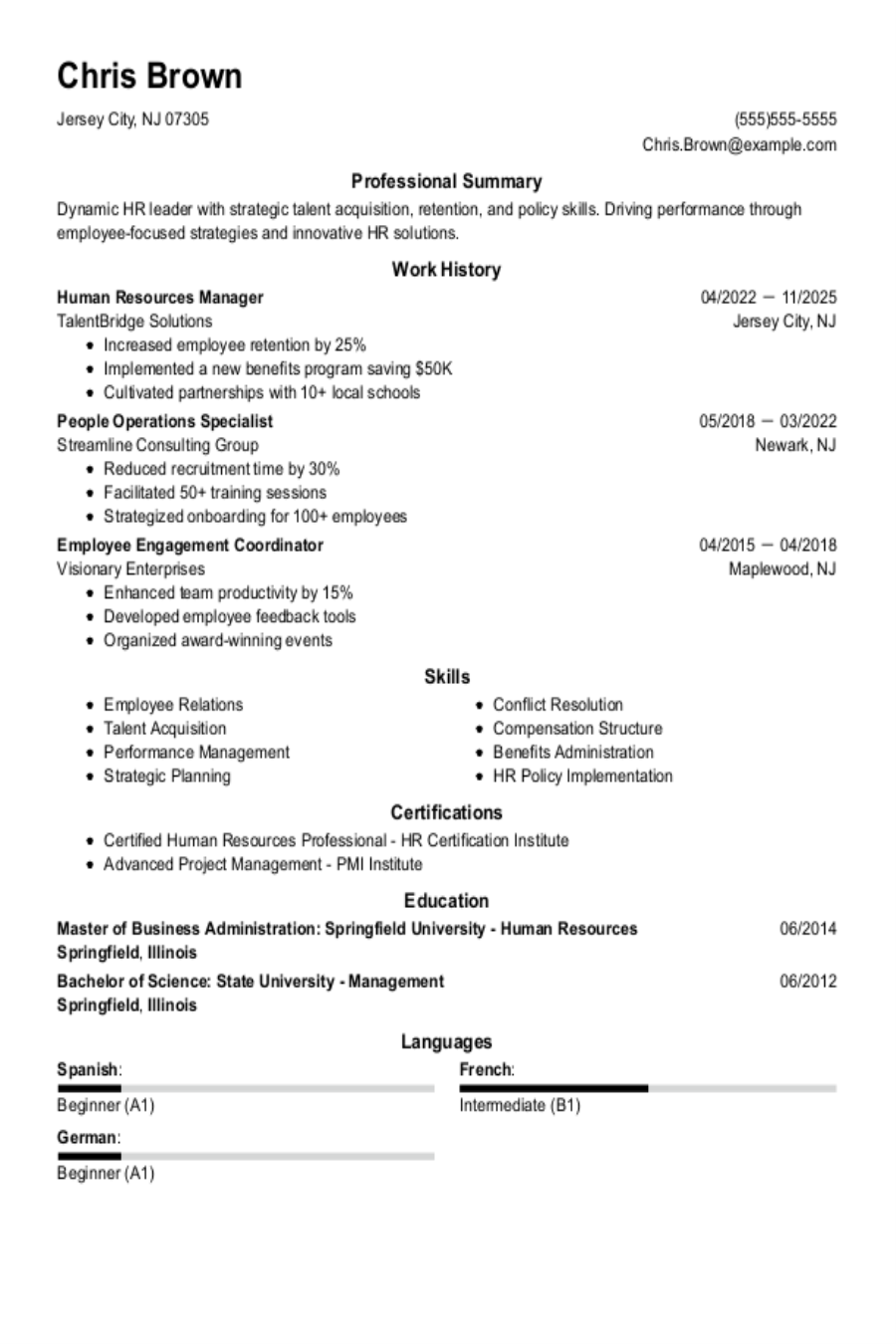
Human Resources Resume: Examples, Templates & Tips
Keith Spencer CPRWCareer Expert Keith is a Certified Professi...
